The Missisquoi River has been an interesting ride so far. We have been going up stream for about forty miles now, past farms and under old railroad bridges. We entered the delta in Missisquoi Bay and enjoyed easy paddling despite the flood stage. The river has always been easy to ascend, as it is a classic pool and drop system, with long flat stretches interspersed with short rapids and falls. That dynamic began to change yesterday afternoon as we noticed a bit of a current in a section that was supposed to be flat. The water levels in the river are actually quite low once one ascends past the end of the delta and into the interior of Vermont, and we have been doing quite a bit of lining, wading, and portaging on account of that. The land is made for lining and tracking though, as the water is so low that it has exposed sometimes as much as twenty or thirty feet of grassy banks with huge boulders that stick out into the current. Still, it is slower than paddling the flats.
The majority of the portages are around the larger rapids and around the hydroelectric dams each town is centered around. Most of the towns we pass through are quite small, a collection of houses and maybe a gas station, with Enosburg Falls and Swanton being the exceptions. Yesterday afternoon's portage in the 80-degree sunny weather was particularly hard, as the low water created a rapid between the take out and what looked like the take out. The resulting portage was exhausting, but by late afternoon we had settled into the Lussier campsite with its soft green grass.
The dominate feature of the Missisquoi, however, are the farms. Most are dairy farms, and the smell of manure jumps at us with some regularity. We cannot drink the water in the river because of this, and because of the fertilizers used; even with treatment the water would make us quite sick. This is an interesting dynamic for me, as I have never paddled a body of water for any length of time that I cannot drink from, albeit with chemical treatment or filtration. Still, when we pass a tractor pulling a spreader that is firing manure slurry a dozen feet from the water's edge, I acquiese to carrying our own water.
Because so much of the land acround the river is dominated by farms, there is little riverside public land, and few campsites. We have to take the rest of today off because we would not be able to make it to the next upstream site before dark.
The other day we pulled into the lee of the railroad bridge near the Missisquoi Bay Bridge to Alburg, VT, and Quebec. We had just finished our last big crossing with heavy seas, and we happy to be able to rest a bit. As we sat there on the jetty supporting the tracks, a freight train came around the corner. It was moving slowly, but brought with it a surpise, approximately sixty-seven cars into the line. There, towards the back of the train, were eleven flatcars piled at least fifteen feet high with lumber wrapped in plastic. The plastic wrap was stamped with the Chantier de Chibougamau wood products company. This is their website: www.chibou.com.
I was shocked, and barely managed to snap a photo before the train pulled away across the bridge toward mainland Vermont. Chantier is a smaller, regional producer located about an hours drive south of Lac Mistassini and the Cree village of Mistissini. In March of this year, I travel there with my friend Naomi to help with her senior thesis research on forestry in the area, and we actually visited the factory and mill that can be seen on Chantier's website. We met some of the management, and drove around the factory before heading north. We were told there that Chantier exports much of its products to the northeast, and here was proof: a train that had crossed the border less than an hour before.
New England is one of the wealthiest parts of the country (with two of the top ten wealthiest states). New England is also far most heavily forested today that it was 150 years ago, a fact touted by both regional and national environmentalists and anti-environmentalists. This fact plays into both of their agendas. The question must then be asked- "where does our wood come from?" the lumber and the pulp and the engineered wood- where does it come from? As it turns out, New England imports its wood and exports its deforestation to other regions. As illustrated by this case, New England is maintaining its forest cover by exporting its deforestation to a much poorer, thinly settled, and politically disempowered region- that of central Quebec and the Cree Nation. I had read about this dynamic before, specificially in the case of Japan. Japan has far more forested land than any other industrialized nation, and imports more forest products as a result. Indonesia and southeast Asia bear the burden. Apparently, there is no free lunch.
A few photos from the last few days:
1.) Our friend on North Hero during his performance

2.) The Chantier shipment

3.) Bridge Portage

4.) The Inland Sea

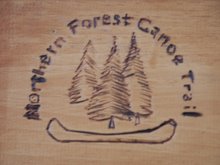
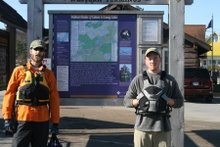
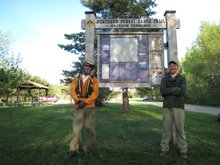
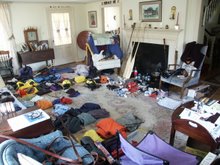
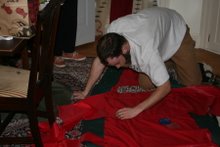
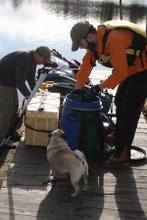
No comments:
Post a Comment